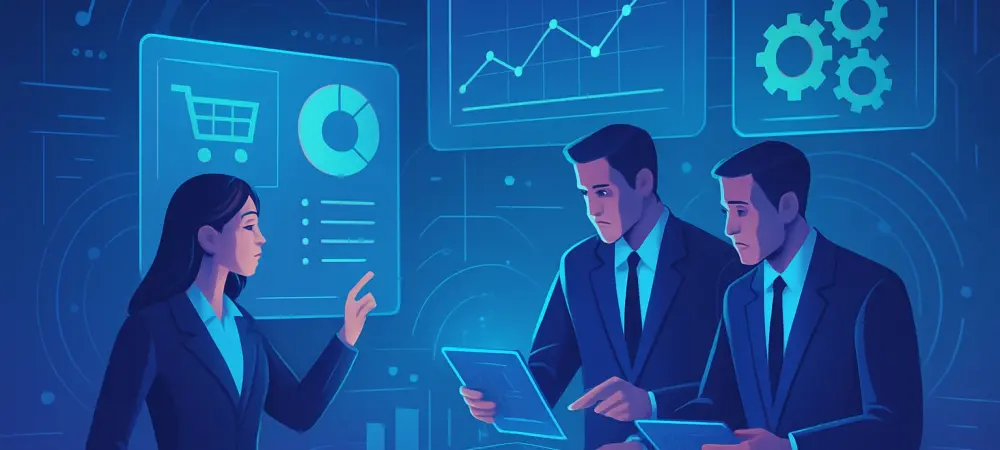Unveiling the Stakes of Prolonged B2B Transactions
In today’s fast-evolving B2B landscape, the average buying cycle stretches between 6 to 18 months, a timeline that poses a formidable challenge for organizations striving to close deals swiftly and maintain a competitive edge. Imagine a technology firm waiting over a year to finalize a deal for a critical software solution, with multiple stakeholders debating every detail while competitors lurk in the background. This extended duration, driven by complex decision-making and high-stakes choices, often results in missed opportunities and strained budgets. This analysis delves into the dynamics of these elongated cycles and examines a transformative Continuum strategy designed to accelerate buyer momentum. By dissecting current market trends and projecting future shifts, the focus is on how sustained engagement can redefine efficiency in B2B transactions, offering actionable insights for marketers aiming to stay ahead.
Dissecting Market Trends and Challenges in B2B Dynamics
Historical Context and Persistent Obstacles
The B2B market has long grappled with a campaign-centric mindset, prioritizing short-term gains over enduring brand equity. This approach, deeply rooted in the push for immediate ROI, often sidelines the vast majority of potential buyers—roughly 95%—who are not actively in-market at any given time, according to widely accepted industry benchmarks. The complexity of solutions, such as enterprise-wide CRM implementations, coupled with the risk of switching providers, further prolongs decision-making, creating a bottleneck for revenue growth. Understanding this historical tilt toward performance marketing reveals a critical oversight: the lack of focus on mental availability for future buyers, a gap that continues to impact deal velocity.
Emerging Buyer Behaviors and Technological Impacts
Modern B2B buyers are reshaping the market with sophisticated research habits, leveraging detailed search prompts averaging 23 words to uncover tailored solutions. The advent of large language models has amplified this trend, demanding that brands optimize content for semantic relevance rather than mere keywords to secure visibility. Data indicates that 63% of executives seek forward-looking insights for the next 3-12 months, highlighting a preference for actionable and thought-provoking material. Yet, a significant hurdle persists—59% of buyers report encountering nearly identical content across providers, underscoring the urgent need for differentiation in a crowded digital space.
Regional and Sectoral Variations in Market Needs
Beyond broad trends, the B2B arena exhibits stark differences across regions and industries, adding layers of intricacy to marketing efforts. For instance, healthcare organizations prioritize regulatory compliance in their purchasing decisions, while manufacturing firms focus on operational uptime, necessitating highly customized engagement strategies. Misconceptions abound, with many assuming a uniform approach to thought leadership suffices; however, 57% of buyers struggle to distinguish between competing content, emphasizing the need for sector-specific narratives. Tailoring content to address unique pain points within these verticals is not just beneficial but essential for cutting through the noise and accelerating buyer interest.
Projecting Future Directions for B2B Engagement
Technological Innovations Shaping the Horizon
Looking ahead, technological advancements are set to redefine how B2B interactions unfold, with AI-driven content tools and semantic search capabilities leading the charge. These innovations will likely push brands to forge deeper connections through personalized, context-rich messaging that aligns with intricate buyer queries. Projections suggest that by 2027, the integration of such technologies could reduce content creation cycles by up to 30%, enabling marketers to respond swiftly to shifting demands. This rapid adaptability will be crucial for maintaining relevance as buyers increasingly expect real-time, tailored solutions.
Economic and Regulatory Influences on Strategy
Economic fluctuations and tightening data privacy regulations are also poised to influence B2B marketing tactics over the coming years. Stricter compliance requirements may limit the scope of personalized content delivery, compelling brands to balance customization with legal constraints. Economic uncertainty could further delay purchasing decisions, especially in capital-intensive sectors like industrial equipment, where budget constraints often stall deals. Navigating these external pressures will require agile frameworks that prioritize long-term engagement over fleeting campaign wins, ensuring sustained buyer trust amid unpredictability.
Blending Branding with Demand Generation
A notable shift in strategic thinking is the growing recognition of merging branding efforts with demand generation to create a cohesive buyer experience. Industry forecasts indicate that brands adopting this integrated approach could see a 20% uptick in pipeline efficiency by aligning mental availability with immediate conversion tactics. The unpredictability of buyer status changes—often triggered by sudden business needs—underscores the importance of continuous presence in the market. This trend toward a unified strategy is expected to gain traction, offering a blueprint for shortening cycles while fostering loyalty across diverse buyer journeys.
Reflecting on Market Insights and Strategic Pathways
Looking back, this analysis unpacked the intricate web of challenges that define B2B buying cycles, from their extended timelines to the evolving demands of modern buyers. The exploration of historical marketing pitfalls and current technological disruptions painted a clear picture of a market in transition, while projections highlighted the transformative potential of sustained engagement strategies. The Continuum approach stood out as a pivotal framework, adept at bridging gaps between long-term branding and short-term results, ultimately driving faster conversions.
For organizations aiming to capitalize on these insights, the next steps involve prioritizing thought leadership that challenges conventional thinking and resonates with specific buyer contexts. Investing in semantic content optimization to match intricate search behaviors proves essential, as does leveraging engagement data to tailor sales interactions. Adopting a mindset of continuous narrative-building, rather than episodic campaigns, emerges as a cornerstone for future success, promising not only to shorten buying cycles but also to build enduring market presence in an increasingly competitive landscape.

